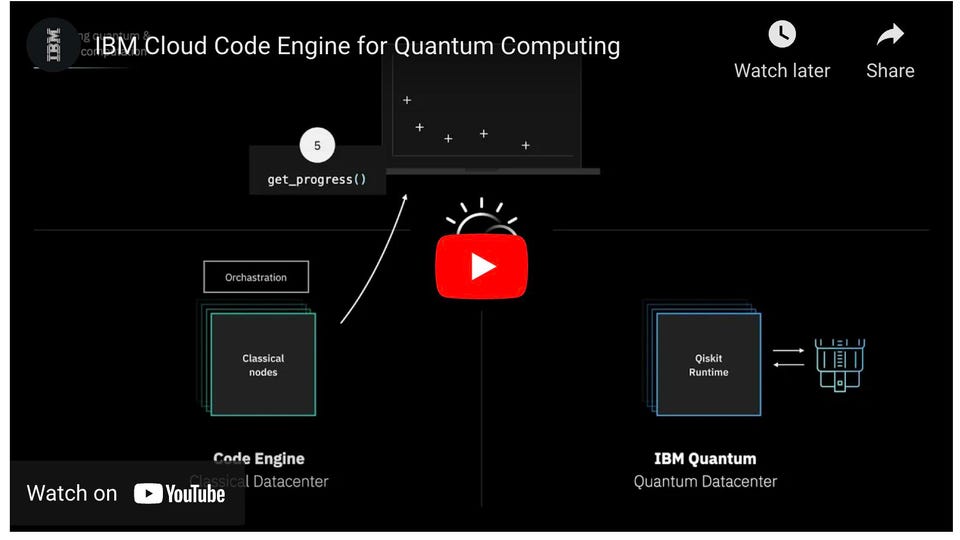Enterprise Tech IBM Research Innovates “Serverless” Approach To Quantum Karl Freund Contributor Opinions expressed by Forbes Contributors are their own. Founder and Principal Analyst, Cambrian-AI Research LLC New! Follow this author to stay notified about their latest stories. Got it! Aug 26, 2022, 08:35am EDT | New! Click on the conversation bubble to join the conversation Got it! Share to Facebook Share to Twitter Share to Linkedin Quantum computing promises near-miraculous performance, but it comes with a lot of caveats.
Most importantly, the problem being solved must be amenable to expression into the quantum “circuits” that can run on todays hardware. But what if only parts of the problem fit that bill? Typically, a complex problem is best addressed with a melange of traditional and quantum technologies. But the techniques for decomposing a problem into different compute domains appropriate for CPUs, GPUs, and QPUs is not well understood by most developers.
Now IBM is helping to pave an on-ramp to quantum through layers of abstraction, much as cloud service providers are increasingly promoting “serverless” computing. What is “Quantum Serverless”? IBM calls this approach “Quantum Serverless”, and intends to enable users to take advantage of quantum resources at scale without having to worry about the intricacies of the underlying hardware. This frictionless development process is enabled in part by the open-source Qiskit, which is a containerized execution environment for classical code that has low-latency access to quantum hardware.
This enables a wide variety of workloads that make iterative or repeated use of quantum hardware to execute dramatically faster than was previously possible. In fact, with Qiskit Runtime IBM was able to demonstrate a 120x speed-up on a variational quantum Eigensolver algorithm compared to the previous circuit API model. Qiskit IBM Qiskit helps support three different types of users.
First, the high-level domain experts in fields such as chemistry, finance or AI who are not necessarily familiar with quantum can now deploy circuits relatively transparently to quantum hardware. This is a big step forward for quantum computing demand, in our opinion. Second, developers with some knowledge of quantum circuits can use the run time library to test real quantum advantages over classical computers.
Finally, Quantum experts who want to examine quantum computing pulses – the control of signals into and out of qubits- can use the same run-time kit to deploy on over 20 quantum systems IBM supports around the world. The IBM team has been researching new methods to employ classical resources to explore larger problems and find more-accurate solutions with quantum computing system, including circuit knitting, quantum embedding, and error mitigation. Circuit knitting uses classical resources to find useful cuts in the problem to produce smaller quantum circuits to run on near-term quantum devices, and then use classical processing to combine the pieces back together to simulate a larger problem.
Error mitigation uses classical post-processing in order to reduce the impact of some classes of errors and get a more-accurate quantum solution. IBM hopes that Quantum + Classical will allow the community to realize quantum advantage in certain applications sooner than currently expected. Whats the advantage? The name “serverless” could a bit confusing.
Of course there are servers (traditional and quantum) being used, but the developer focuses only on coding, with no need for consideration of the hardware infrastructure. Everything is encapsulated as cloud services and the service requires no capacity or life cycle management considerations and scales seamlessly. Finally, the user only pays for consumption, never for idle time.
MORE FOR YOU The 5 Biggest Technology Trends In 2022 ‘Enthusiastic Entrepreneurs’: Pre-IPO Statements On Profitability Prove To Be Larger Than Real Life The 7 Biggest Artificial Intelligence (AI) Trends In 2022 Conclusions Today, IBM is only giving a glimpse of the future with a simple demonstration of how the IBM Cloud Code Engine with Qiskit Runtime allows users to seamlessly use CPUs, GPUs and QPUs as part of a single application. Going forward, IBM is rethinking the way that quantum programs run, exploring even more complex quantum computations and hopefully realizing and accelerating the realization of true quantum advantage, the point that quantum is substantially superior to conventional computation resource. IBM has shown a proof of concept for Quantum Serverless, and this how the company sees the future of quantum computing.
Follow me on Twitter or LinkedIn . Check out my website . Disclosures : This article expresses the opinions of the authors, and is not to be taken as advice to purchase from nor invest in the companies mentioned.
Cambrian AI Research is fortunate to have many, if not most, semiconductor firms as our clients, including Blaize, Cerebras, D-Matrix, Esperanto, FuriosaAI, Graphcore, GML, IBM, Intel, Mythic, NVIDIA, Qualcomm Technologies, Si-Five, SiMa. ai, Synopsys, and Tenstorrent. We have no investment positions in any of the companies mentioned in this article and do not plan to initiate any in the near future.
For more information, please visit our website at https://cambrian-AI. com . Karl Freund Editorial Standards Print Reprints & Permissions.
From: forbes
URL: https://www.forbes.com/sites/karlfreund/2022/08/26/ibm-research-innovates-serverless-approach-to-quantum/



